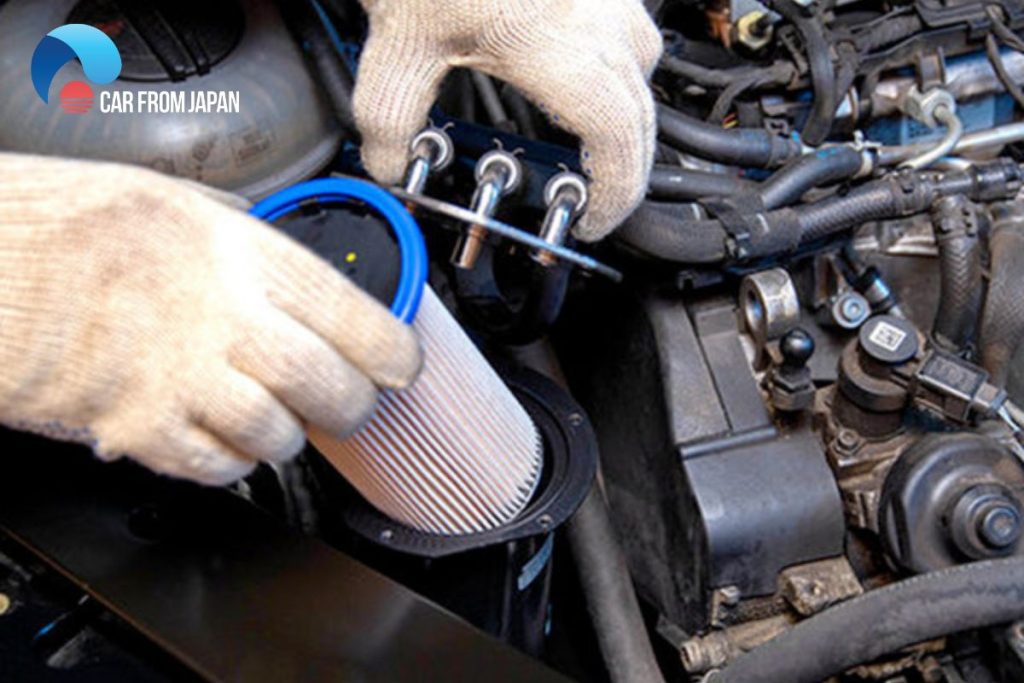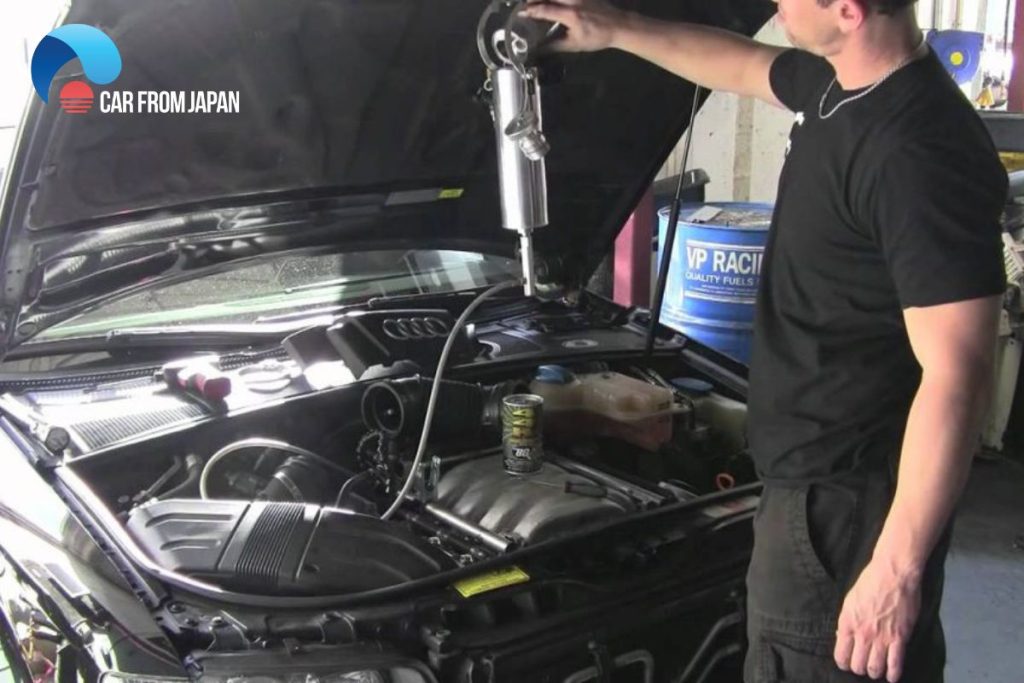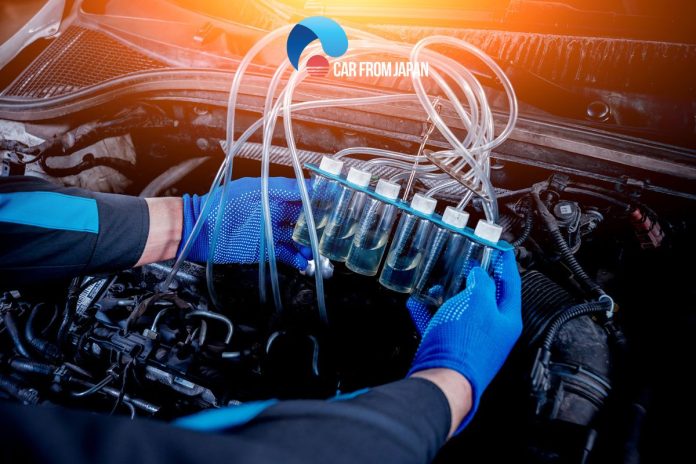Is a fuel induction service a necessary part of car maintenance, or just another upsell at the mechanic?
Many car owners are unsure about this service, questioning its benefits and whether it’s truly worth the cost.
This article demystifies the fuel induction service, explaining what it is, whether your car really needs it what happens during the process and the fuel induction service cost.
We’ll also explore the signs your car might benefit from an induction service, and how to make an informed decision based on your vehicle’s specific needs and driving habits.
Contents
What is Fuel Induction Service?
A fuel induction service is a maintenance procedure that cleans the fuel and air intake system of your car’s engine.
Over time, carbon deposits can accumulate in areas like the throttle body, intake manifold, fuel injectors, and intake valves. This buildup can restrict airflow and disrupt fuel delivery, potentially leading to reduced performance, decreased fuel economy, and rough idling.
A fuel induction service uses specialized cleaning solutions to remove these deposits, aiming to restore optimal engine performance and efficiency. It’s important to note that while some dealerships or mechanics might recommend this service at regular intervals, its necessity depends on various factors like your driving habits, fuel quality, and overall vehicle maintenance.

What Does The Fuel Induction Service Cover?
A fuel induction service focuses on cleaning key components of your engine’s air and fuel intake system. Here’s a breakdown of what typically happens during this service:
Your engine’s combustion process relies on the precise mixture of air and fuel. Air is drawn in and mixed with fuel, then ignited to power the engine. A key player in this process is the throttle body, which works with the car’s computer (ECU) to control how much air enters the engine, ensuring the correct air-fuel ratio for optimal combustion.
Over time, however, this combustion process can leave behind carbon deposits. These deposits accumulate in areas like the throttle body and intake manifold, disrupting airflow and potentially causing problems like a check engine light, reduced fuel efficiency, decreased engine performance, or even a noticeable exhaust smoke. If left unchecked, these carbon deposits can lead to more significant engine issues.
This is where a fuel induction service comes in. A qualified mechanic will diagnose the extent of the carbon buildup and then clean key components of the fuel and air intake system, primarily the throttle body and intake manifold. This thorough cleaning helps restore the engine’s performance and efficiency by removing those performance-robbing deposits, getting your engine closer to its original, clean-running condition.
How Much Should Fuel Induction Service Cost?
The price of a full fuel induction service typically ranges from $150 to $170, but it can be higher depending on the severity of carbon buildup and whether any related components need attention.
If a full induction service seems unnecessary or too expensive, you can opt for a simpler, more affordable approach using fuel injector cleaner additives. These typically cost between $20 and $40 per bottle and can be added directly to your fuel tank. While these additives can help clean fuel injectors and other components to some extent, they aren’t as thorough as a professional fuel induction service. You can use these cleaners every 5,000 to 10,000 miles as a preventative measure.
Ultimately, a professional fuel induction service provides the most comprehensive cleaning of the entire fuel and air intake system, offering the best chance of restoring optimal performance and fuel efficiency in the long run.
Benefits of Performing Fuel Induction Service
A fuel induction service offers several potential benefits for your vehicle:
- Restored engine performance: By removing carbon buildup, the service can restore lost engine power and improve overall responsiveness. This can be particularly noticeable if you’ve been experiencing sluggish acceleration or a general lack of power.
- Smoother engine operation: Cleaning the fuel and air intake system can lead to smoother engine operation, reducing or eliminating issues like rough idling, hesitation, or uneven running.
- Improved fuel economy: A cleaner engine can burn fuel more efficiently, potentially leading to improved gas mileage.
- Reduced emissions: With cleaner combustion, harmful emissions can be reduced.
- Restored combustion chamber pressure: Removing carbon buildup can help restore proper compression in the combustion chambers, further enhancing engine performance.
How to Tell if Your Car Needs Fuel Induction Service?
Several symptoms can indicate a buildup of carbon deposits in your engine’s fuel and air intake system. Addressing these issues early can prevent more serious problems down the road. These are several key symptoms to watch out for.

Noticeable decrease in gas mileage
One of the most common signs is a noticeable drop in fuel economy. If you’re suddenly filling up your tank more frequently than usual, carbon buildup restricting airflow and hindering fuel delivery could be the culprit.
Carbon buildup is hindering combustion efficiency, forcing your engine to work harder and burn more fuel.
A rough or unstable idle
Pay attention to how your engine idles. A rough or unstable idle, characterized by shaking or vibrating, can point to dirty fuel injectors or a clogged throttle body, both of which can be addressed by an induction service.
Performance issue during acceleration
Car’s performance issues can also indicate a need for an induction service. If your car hesitates, stutters, or feels sluggish when you accelerate, it could be due to restricted airflow or inconsistent fuel delivery caused by carbon deposits.
Similarly, a noticeable loss of power, especially when climbing hills or merging onto highways, can suggest that carbon buildup is hindering your engine’s performance.
The engine is noisy
A fuel-related problem can hinder engine performance, requiring you to press the accelerator harder to achieve the desired speed or acceleration. This extra strain on the engine can result in increased engine noise.
Car exhaust releases smoke
Because the combustion chamber is blocked, fuel will not be injected and burn completely. This amount of fuel will leak into the exhaust pipe and cause combustion in the pipe to produce more smoke from exhaust.
The car’s check engine turning on
Finally, while a check engine light can indicate a variety of problems, it could also be related to issues within the fuel and air intake system, potentially pointing towards the need for a fuel induction service.
The accumulation of carbon in the air intake may prevent enough air from flowing into the engine. The carbon deposits may also contribute to the formation of hotspots leading to the engine overheating.
If you encounter any of these symptoms, it’s always best to consult a qualified mechanic. A professional diagnosis can accurately determine the cause of the problem and recommend the appropriate course of action, which may include a fuel induction service.
Getting a professional opinion ensures you’re addressing the root cause of the issue and can help prevent more costly repairs in the future.
FAQs about Fuel Induction Service
Do cars really need fuel induction service?
While not strictly necessary for all cars, a fuel induction service can be beneficial, especially if your car is experiencing performance issues like rough idling or reduced fuel economy. Carbon buildup in the engine’s intake system can reduce performance, and an induction service uses specialized cleaners to remove these deposits. However, if your car runs well and is regularly maintained, it might not be needed. Consult a trusted mechanic for personalized advice.
How often should I do a fuel induction service?
Some dealerships recommend this service every 30,000 miles, but its actual usefulness depends on factors like your car’s age, mileage, driving conditions, and maintenance history.
What is done during a fuel induction service?
A fuel induction service typically involves cleaning several key parts of your car’s fuel and air intake system:
+ Throttle Body: Cleaners are used to remove built-up carbon deposits from the throttle body and throttle plate.
+ Intake Manifold: The intake manifold, responsible for distributing air to the engine cylinders, is cleaned to remove deposits that can restrict airflow.
+ Fuel Injectors: Specialized cleaning solutions are used to clean the fuel injectors, removing deposits that can obstruct fuel flow and disrupt the spray pattern. This can improve fuel atomization and combustion efficiency.
+ Intake Valves and Ports: Cleaners are applied to the intake valves and ports to remove carbon buildup, which can interfere with proper airflow and combustion.
+ Combustion Chambers: Cleaning solutions may be used to remove carbon deposits from the combustion chambers themselves, improving combustion efficiency.
Wrapping Up
A fuel induction service can be a valuable part of maintaining your car’s performance, similar to other restorative maintenance procedures. Excessive carbon buildup can lead to long-term engine problems and reduced performance, so addressing it is important.
We hope this article has provided helpful insights into the fuel induction service, its costs, and the benefits of keeping your combustion system clean.
For more car maintenance tips and advice, be sure to follow Car From Japan.



